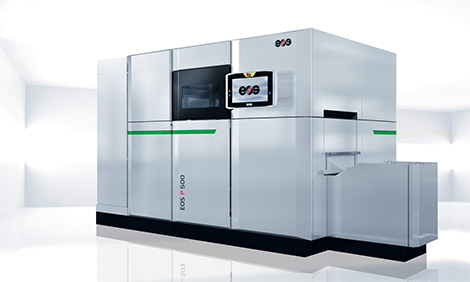
The P500 is a future facing polymers printer from EOS as it looks to tackle mass production
Lowest cost-per-part is fast becoming the battle cry among several 3D printing vendors, but EOS is looking to push those costs lower with its most efficient polymers printer, the P500.
Operating at up to 300°C with dual laser fusing system, the printer preheats the polymer material in advance before it is applied on the build platform, reducing layer times, while efficiencies are improves as all recycled powder can be recycled for the next build job at higher fill rates.
A new job can be started 15 minutes after the previous build has finished, thanks to switching between the exchangeable frames, with EOS also boasting of only weekly cleaning cycles and annual maintenance – maximising uptime.
The EOS P500 comes alongside several solutions for monitoring and integration, with quality assurance through sensory, as well as camera based (optical and thermal) data evaluation.
In conjunction with EOSCONNECT software, machine and production data can be gathered and made available in real-time, while an app helps visualise the data on a dashboard, what EOS believes is the ‘next step’ towards comprehensive and user-friendly machine park surveillance.
Software integration also plays an important role for preparing the AM build job. The P500 is supported by CAM tool EOSPRINT 2 – usually found with EOS’s metal systems. The software enables engineers to assign and to optimise build parameters for their CAD data.
The first high performance polymer available will be PEKK, a material known for its high thermal stability, inherent flame retardancy and high chemical resistance, that makes it a lightweight alternative to metal.
EOS is working with Arkema, Evonik and BASF for developing future polymer materials.






